Queen of Hearts
Over a period of 5 years, Will used playing cards to draw symbolism into his oil paintings. In some cases, the symbolism is obvious, such as in this self-portrait:
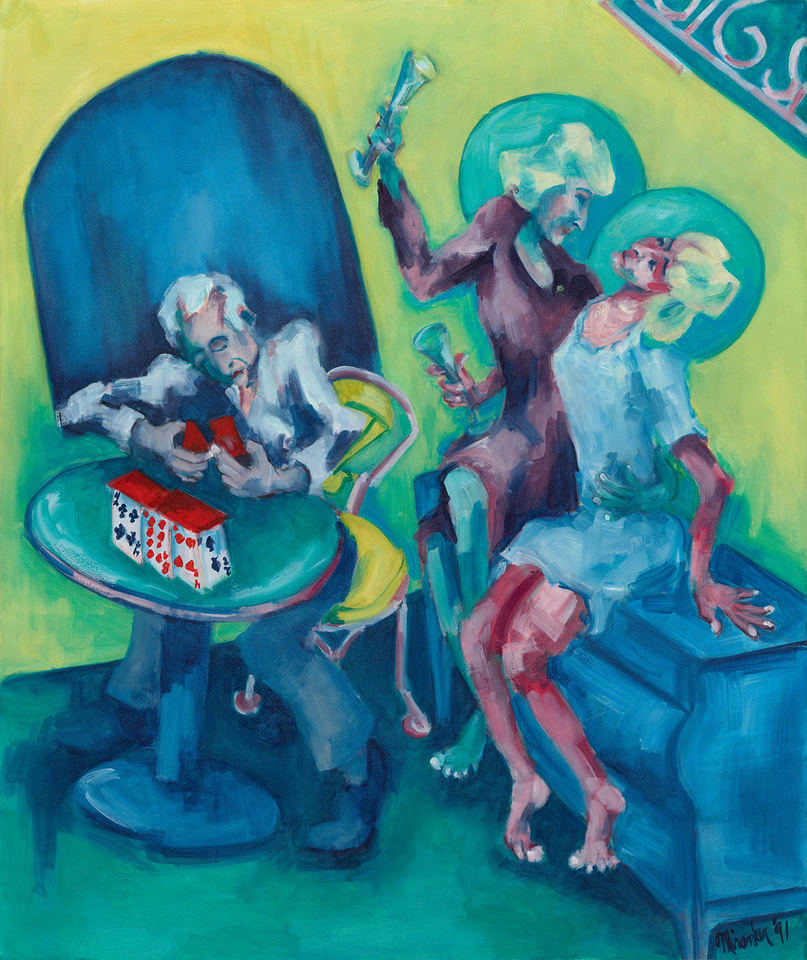 House of Cards, 1991, 50 x 42
House of Cards, 1991, 50 x 42
It is no accident that the displayed cards are 2, 4, 8 and 4. Neither is the presence of halos around the heads of the two women. This does not mean I have an explanation of the symbolism! Ideas welcome.
Personally, I prefer my father's more abstract/anthropomorphic use of cards such as in these:
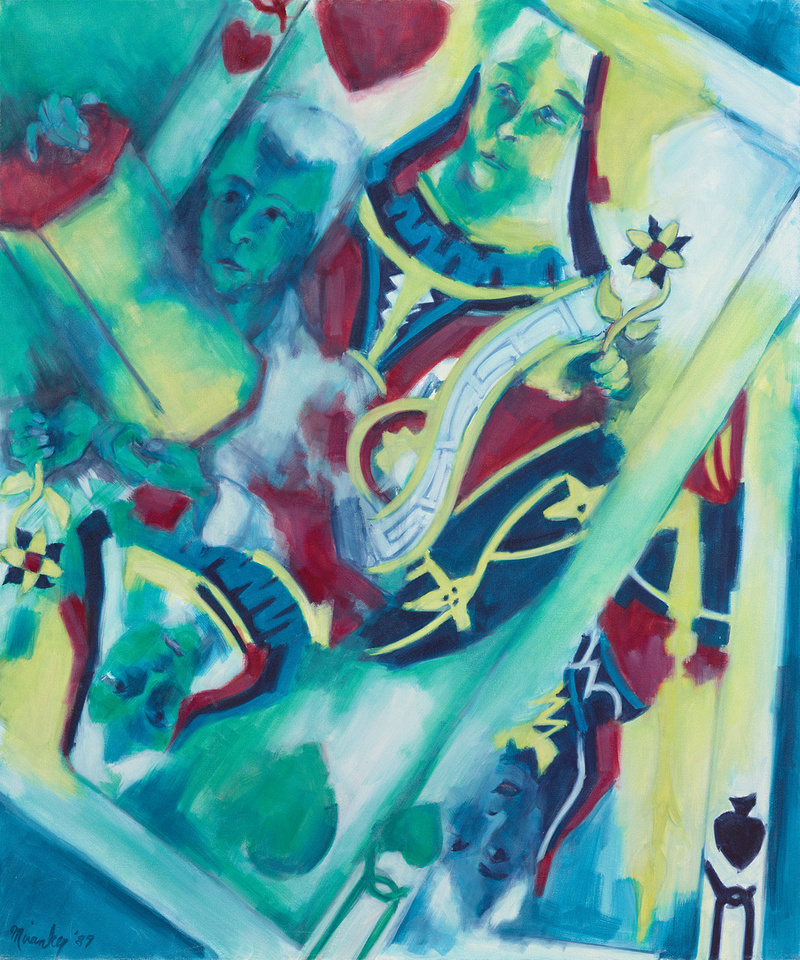 Queens with Hourglass Watcher, 1989, 40 x 48
Queens with Hourglass Watcher, 1989, 40 x 48
The hourglass is used in at least one other painting. More common though, are the presence of women acting as observers or muses. I will probably make a collection of those for a later blog post.
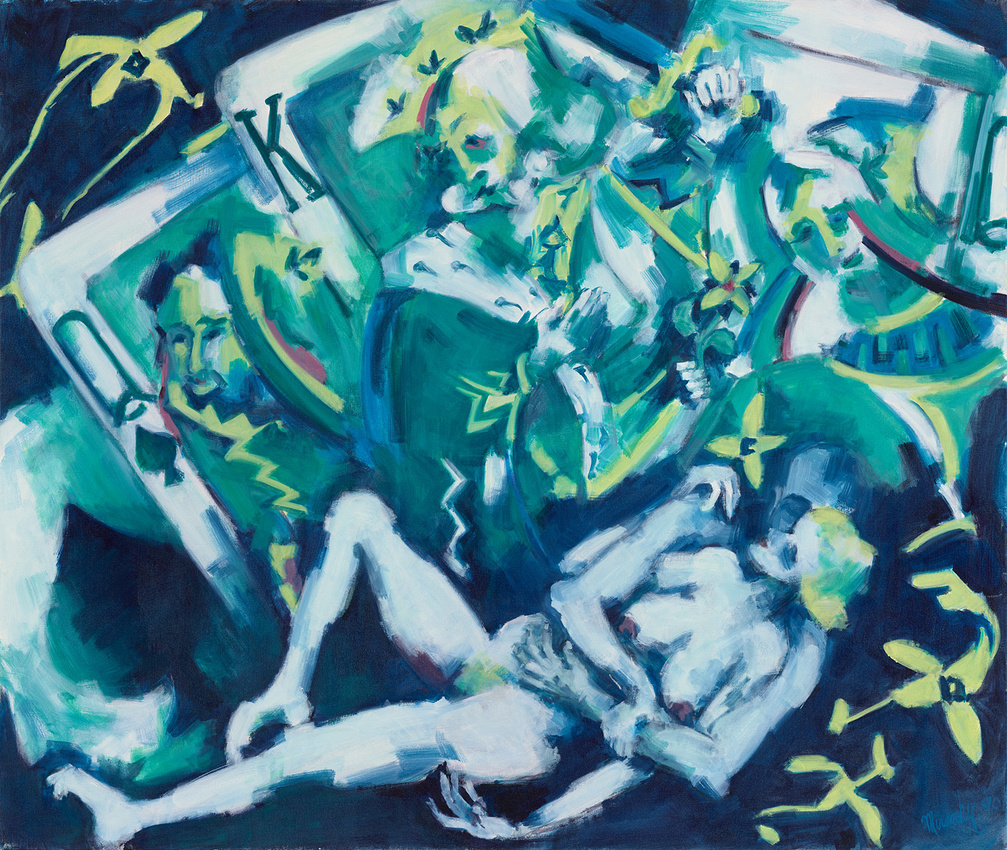 Lovers and Cards, 1991, 42 x 50
Lovers and Cards, 1991, 42 x 50
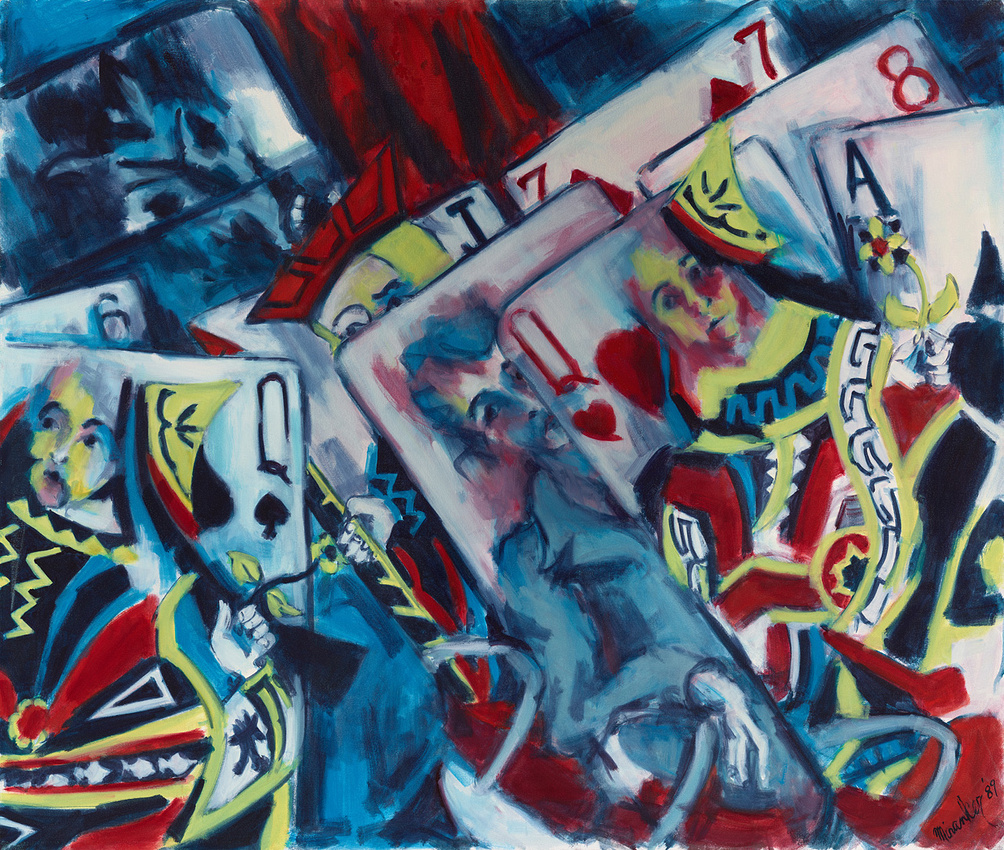 In the Train with Playing Cards, 1989, 50 x 42
In the Train with Playing Cards, 1989, 50 x 42
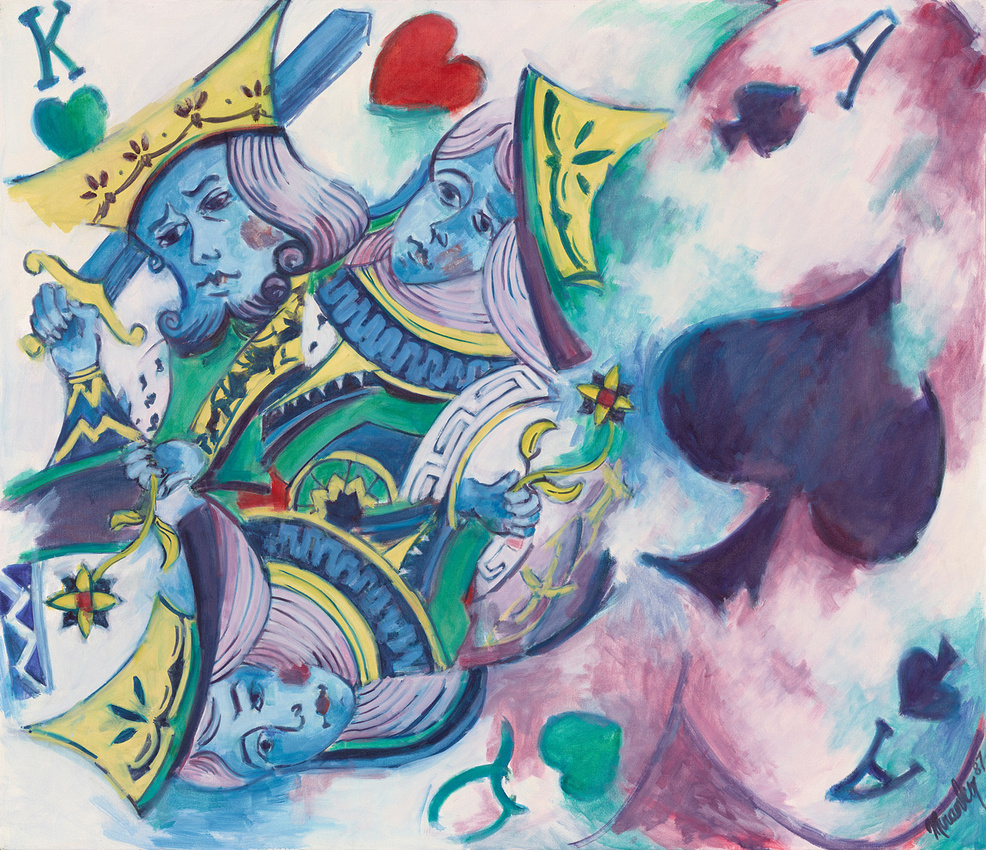 Ace of Spades, 1987, 54 x 46
Ace of Spades, 1987, 54 x 46
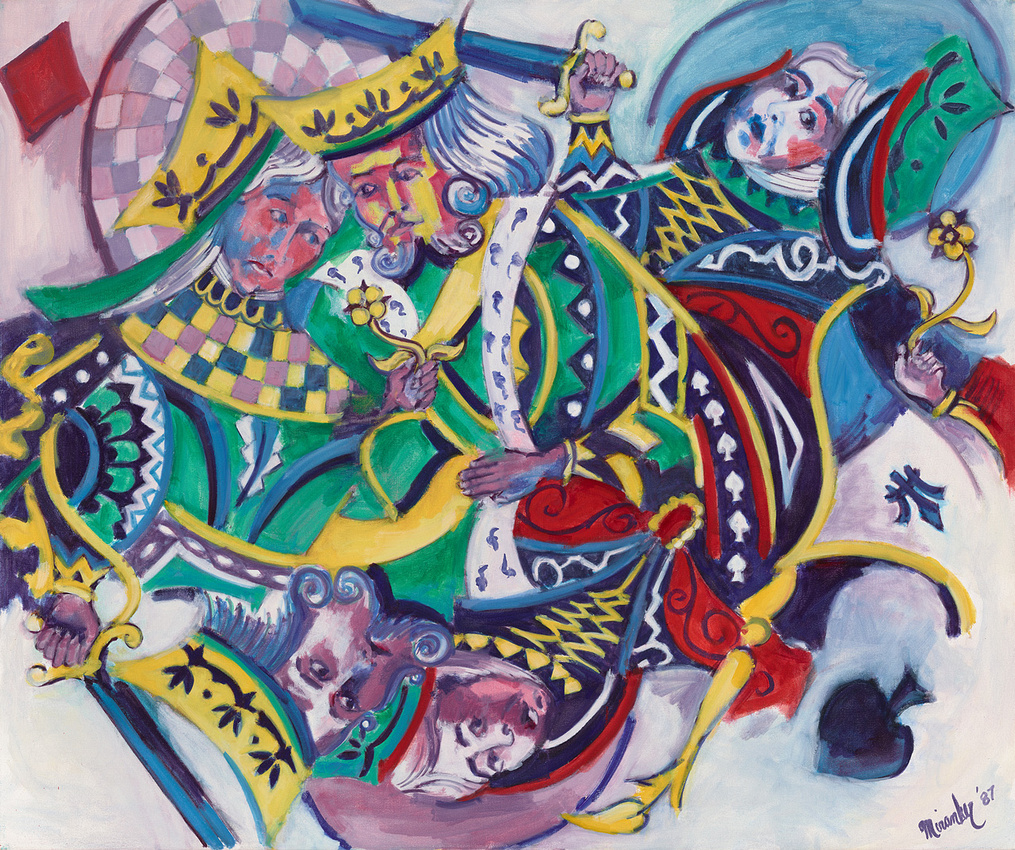 Queen of Diamonds, 1987, 48 x 40
Queen of Diamonds, 1987, 48 x 40
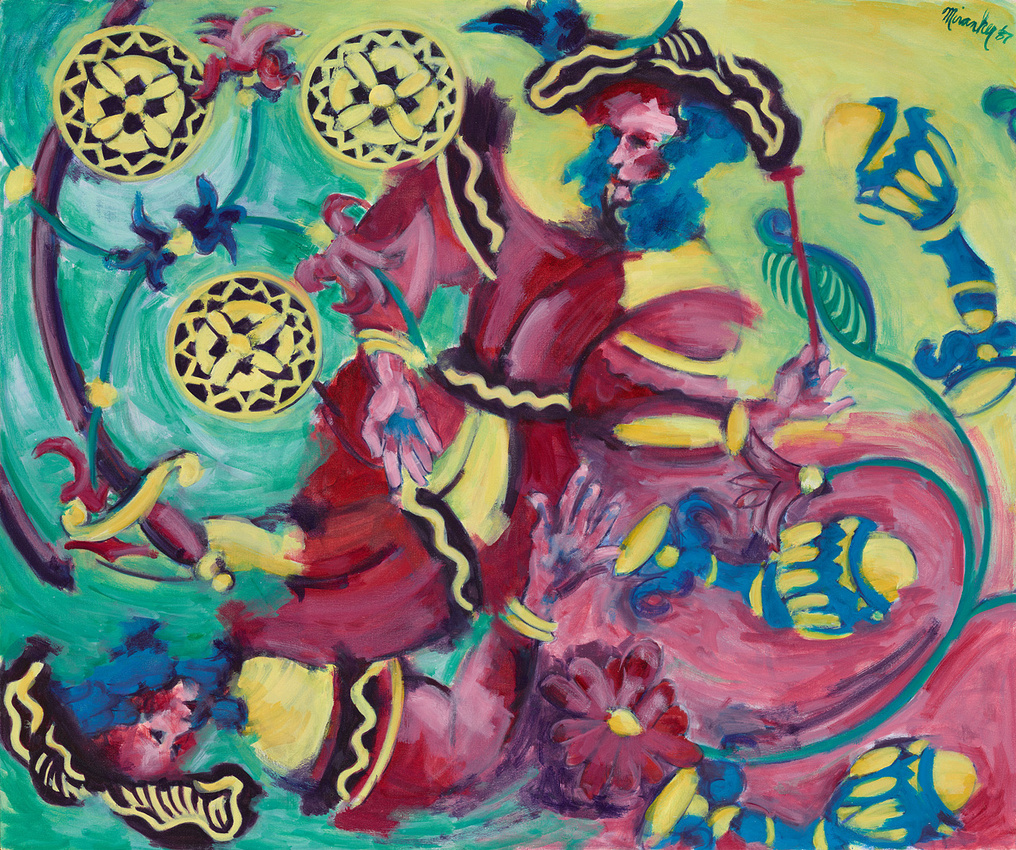 Magician, 1987, 48 x 40
Magician, 1987, 48 x 40
The above work, "Magician" is also distinct in that it uses symbols from a european playing card deck where the suits are coins, cups, swords and batons. The three coins in yellow and black are obvious. Thanks to Michael Crampton for pointing this out.
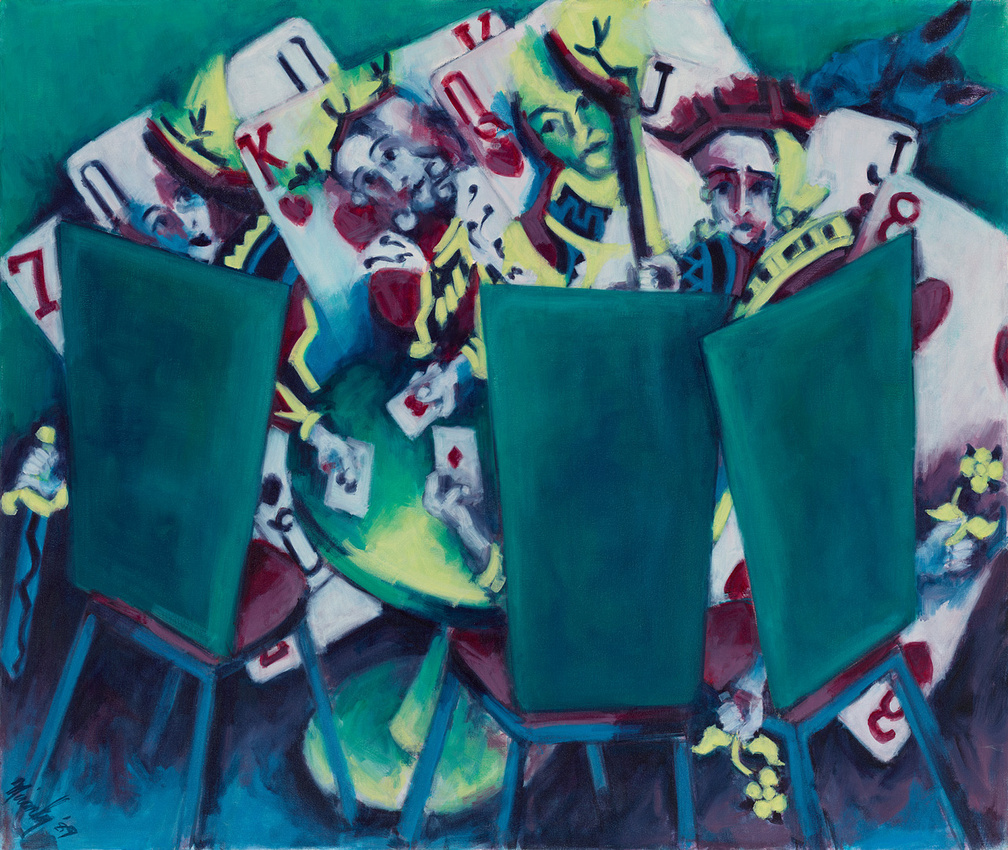 Cards Playing Cards, 1989, 50 x 42
Cards Playing Cards, 1989, 50 x 42
Finally, I noted a great many paintings included a muse or observer holding a flower. My student Marisa, pointed out the muses changed, but the flower did not. The flower is from the queen of hearts:
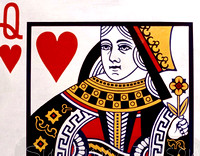

If you look at the above paintings, you will see this flower again and again. Sometimes, the flower is the only thing present. Here is a one example:
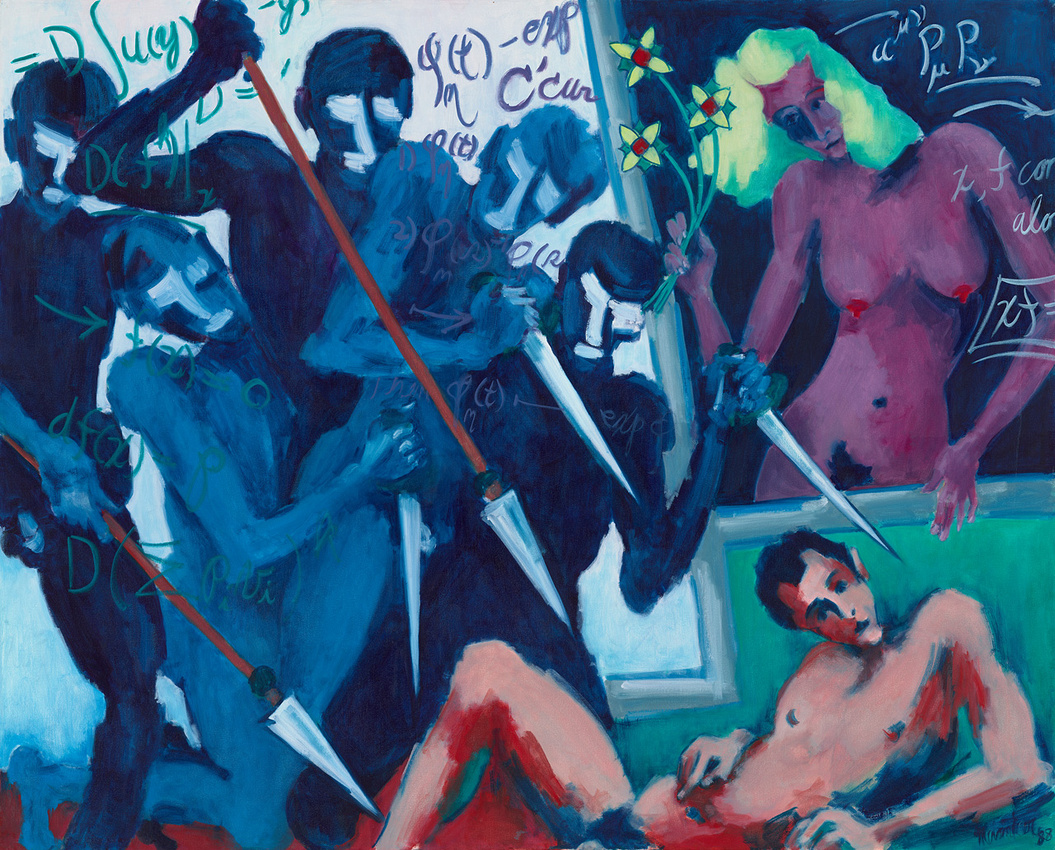 Math Demons, 1988, 64 x 52
Math Demons, 1988, 64 x 52
The mathematics will be a subject on its own in the future. It is safe to say that the man on the ground is tormented by mathematics. The muse, however, is clearly holding the queen of hearts' flowers.
Note, all painting titles in this post for paintings up to and including 1989 are my father's titles. Later titles are made up by me.
Comments
To me, the threes are their children!